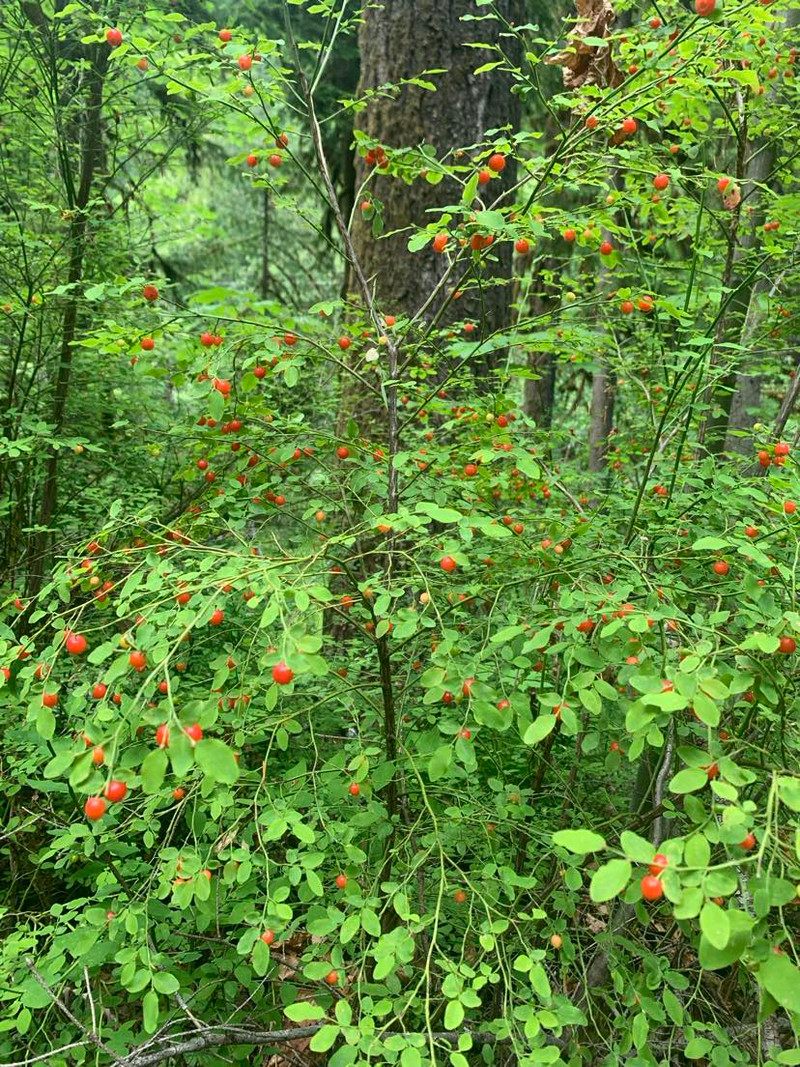These days it seems like evidence of our changing climate is all around us. Just last week, the Pacific Northwest saw a heat wave that had us sitting in temperatures that clocked in at over 20 degrees higher than average for the first week of July. This has been heavy on my mind as I joke about how I didn’t move to the PNW for so much sunshine. I took my worries on a hike to look in the wild for the plants we raise at the nursery and see how they’ve been doing… and I was overwhelmed by what I found.
Not only were the native trees and berry bushes doing just fine, they were THRIVING! I visited a couple of places I’ve made multiple trips to throughout the year, and made note of how they’ve progressed. In the past, I noticed weeds that cause common issues in the garden, and wondered if they would take over on the trail as they tend to at home. To my initial amazement, I saw that while the native bushes and shrubs were thriving, the weeds had either mostly died back, or were just barely hanging on. After thinking about this some more, though, I had to smile at the lessons this teaches.
Native plants remind us that we are resilient, adaptable, and are active contributors to the health of our immediate environment. Native plants often have roots that reach deep, allowing them to better withstand periods of drought and high heat. These roots also help to stabilize the soil and prevent erosion during times of heavy rain or flooding.
Native plants support local biodiversity, offering food and shelter to a wide variety of insects, mammals, birds and more. At a time when climate change paired with urban sprawl is damaging or destroying local habitats, it’s more important than ever that we create spaces that preserve diverse ecosystems. Studies have shown that biodiversity leads to higher resiliency against the impacts of climate change, with better adaptability and recovery from environmental stressors.
And we can’t forget what a crucial role native plants play in supporting the ecosystem through water filtration, air purification, and nutrient cycling. Trees and shrubs are especially well suited to help with carbon sequestration- capturing and storing carbon from the atmosphere. This plays a crucial role in reducing the amount of greenhouse gases in the atmosphere.
While my day may have started out with me feeling overwhelmed by our changing climate, as usual, I was able to find solace in Nature. Taking a walk through the woods and observing the ways that native plants support each other, and the broader ecosystem gave me the opportunity to reflect on the many ways in which we can do the same. Perhaps creating systems of support and interdependence in our communities starts with honoring and tending those same systems in our gardens at home.
